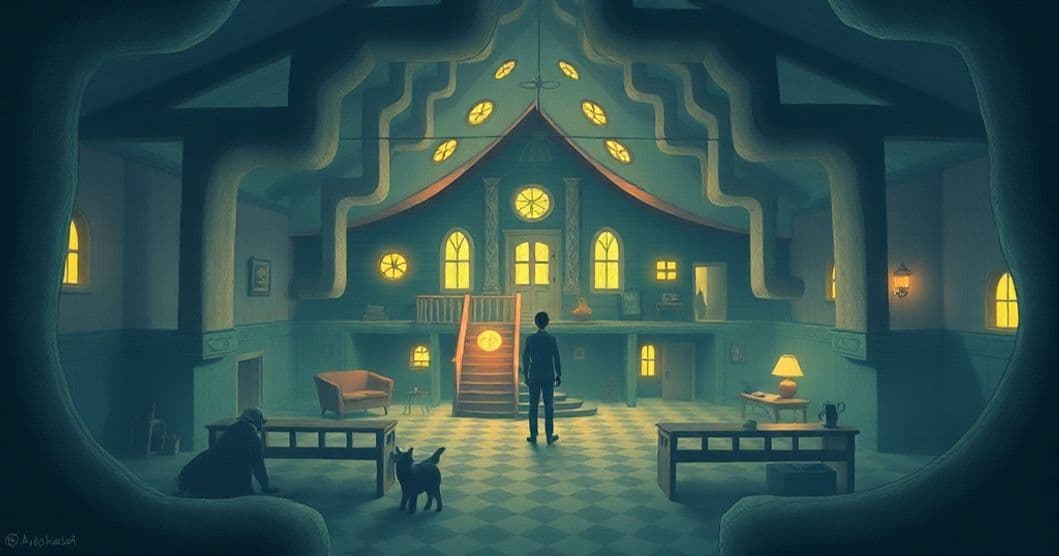Part 1: Dream Presentation
Dreams often serve as portals to our inner landscapes, revealing truths we may not consciously acknowledge. This recurring dream of a house that exists only in sleep offers a compelling window into the dreamer’s unconscious world, where memory, fear, and familiarity intertwine. The house, with its four distinct levels and hidden passages, functions as both a physical and psychological space—one the dreamer knows intimately yet fears to explore fully.
I’ve carried this recurring dream with me since childhood—a house that exists only in the liminal space between sleep and wakefulness. Its layout is etched into my memory with the precision of a map I’ve memorized through years of repetition. I know every inch of it: the creak of the staircase, the smell of aged wood in the hallway, the exact placement of each piece of furniture. There are four stories: a damp, shadowed basement; the main floor with its faded wallpaper and drafty windows; a second floor where the bedrooms feel both familiar and alien; and a third level that leads to an attic-like space I can never quite reach. What makes this house so unsettling is that I also know its secrets—the hidden rooms, the doors that open to nowhere, the maze of hallways that shift if I pause too long. Behind each door lies something I don’t want to see: darkness, whispers, or just the overwhelming sense that I’m being watched. I’ve tried to draw it, but my hands shake too much; the details always blur, as if the house itself resists being captured in two dimensions. Yet I can describe it to anyone who’ll listen, reciting room dimensions and furniture positions like a tour guide. This isn’t just a dream—it’s a place I know better than my own skin, though I’d rather forget it. The nightmares feel less like fear and more like a compulsion to revisit this house, to confront what hides behind those doors. I wonder if anyone else has a place like this, a dreamscape they can’t escape but can’t fully explain.
Part 2: Clinical Analysis
Want a More Personalized Interpretation?
Get your own AI-powered dream analysis tailored specifically to your dream
🔮Try Dream Analysis FreeSymbolic Landscape: The House as Inner Self
The recurring house in this dream is a powerful symbol of the dreamer’s inner psyche, embodying the complexity of the unconscious mind. In Jungian psychology, the house often represents the Self—a metaphorical structure containing all aspects of personality, both conscious and unconscious. The four stories may correspond to different levels of psychological development: the basement could symbolize repressed memories or shadow aspects of the self, while the main floor represents the conscious, everyday self. The third-floor attic, a space the dreamer can never fully reach, hints at potential growth or unresolved issues just beyond awareness.
The house’s familiarity despite its unsettling nature suggests the dreamer’s deep connection to their inner world. The ability to map every detail—furniture, hidden rooms, doorways—reflects an attempt to impose order on chaos, a common defense mechanism when facing overwhelming emotions. The
